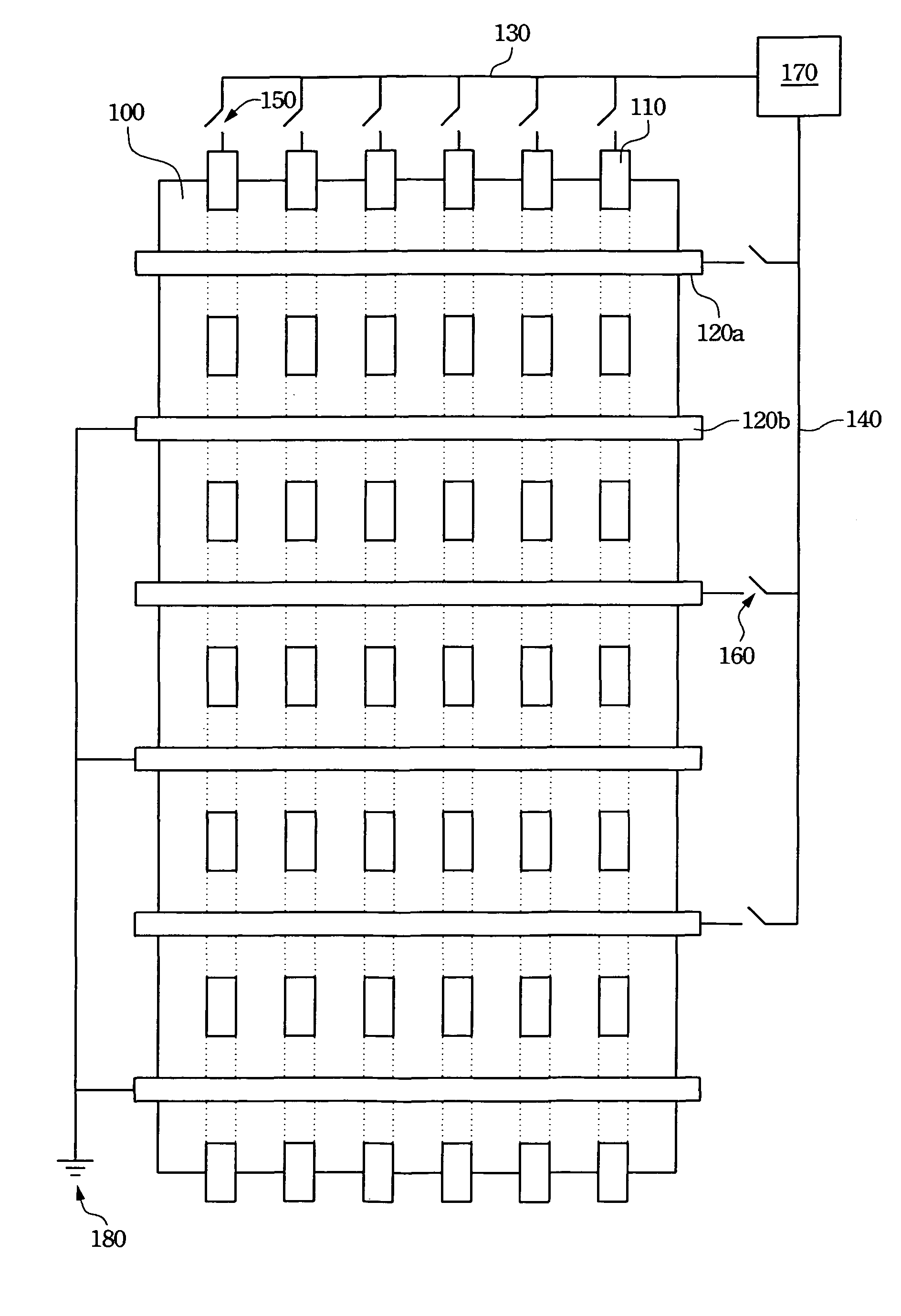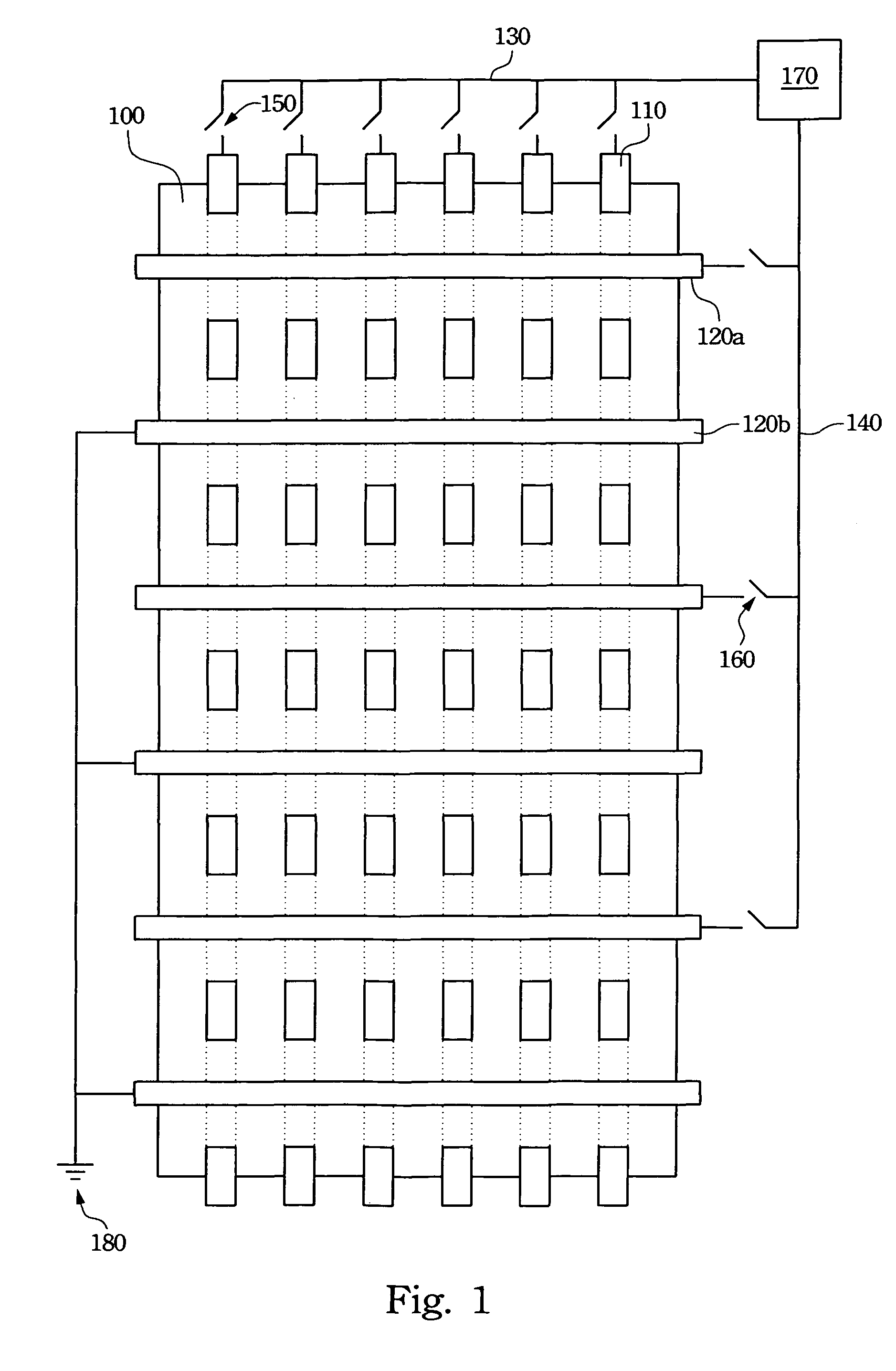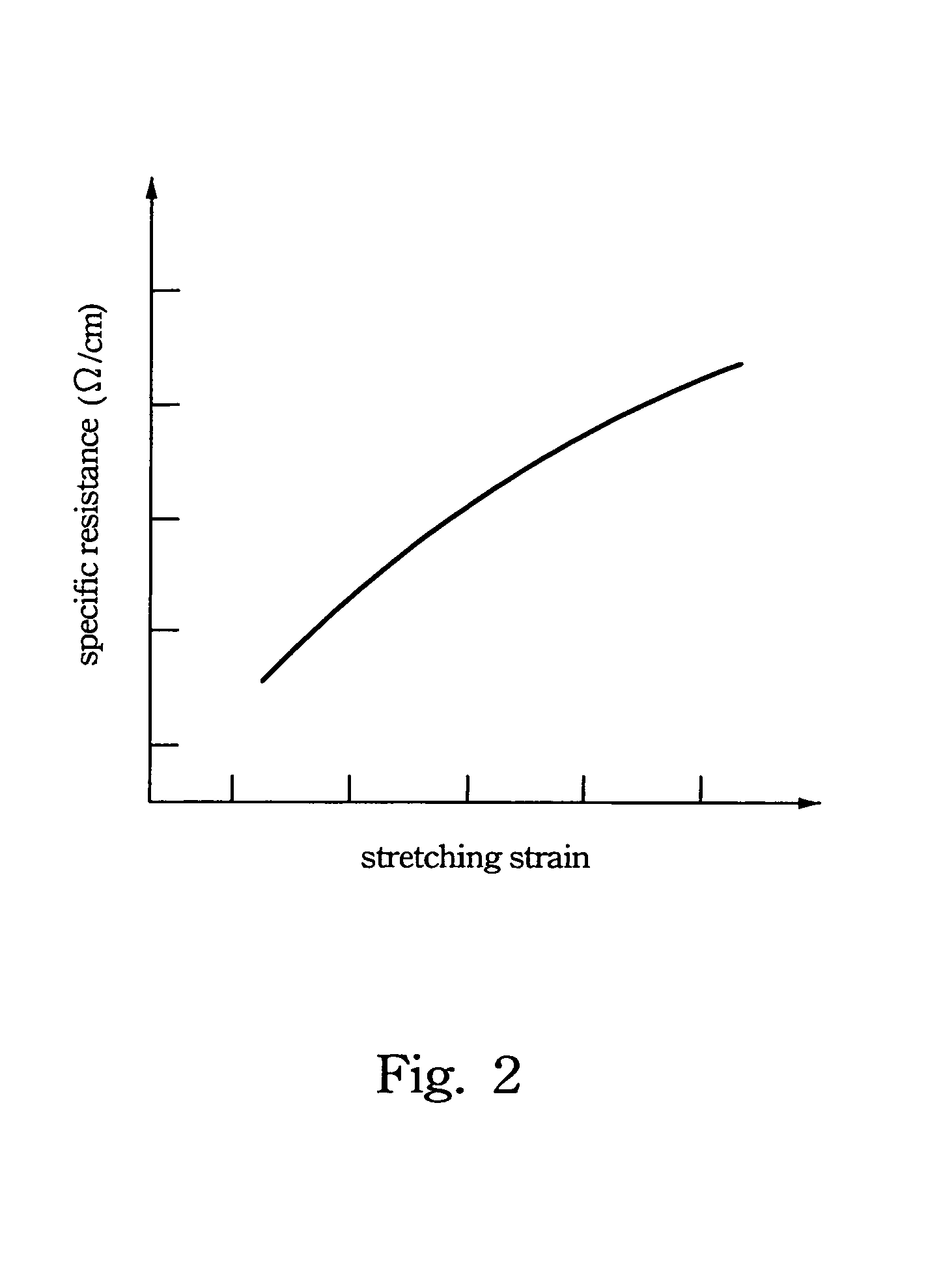Pressure sensible textile and pressure sensible device thereof
a technology of sensing textiles and sensing devices, applied in the direction of positive temperature coefficient thermistors, instruments, weaving, etc., can solve the problems of limited application of relative products and circuit design limitations, and achieve the effect of increasing the sensitivity of detecting the location and magnitud
- Summary
- Abstract
- Description
- Claims
- Application Information
AI Technical Summary
Benefits of technology
Problems solved by technology
Method used
Image
Examples
first embodiment
The First Embodiment
[0022]Referring to FIG. 1, a diagram of a pressure sensible textile and the corresponding pressure sensible device according to an embodiment of the present invention is illustrated.
[0023]In FIG. 1, the main textile 100 of the pressure sensible textile is composed of the high-resistance conducting wefts and warps. The low-resistance conducting warps 110 and the low-resistance conducting wefts 120a and 120b are crisscross distributed over the main textile 100. The low-resistance conducting warps 110 interweave above and below the main textile 100, and the low-resistance conducting wefts 120a and 120b are fixed only at one side of the main textile 100, for example, fixed at the upper side. The low-resistance conducting warps 110 and the low-resistance conducting wefts 120a and 120b are separated by the main textile 100 so that they do not contact to each other in order to prevent short circuits. The weaving scheme of the main textile 100 may be any conventional wea...
second embodiment
The Second Embodiment
[0032]Please refer to FIG. 3. FIG. 3 illustrates a diagram of the pressure sensible textile and the corresponding pressure sensible device according to another embodiment of the present invention.
[0033]In FIG. 3, the structure of the pressure sensible textile is different from the pressure sensible textile displayed in FIG. 1. In FIG. 3, the main textile 300 of the pressure sensible textile is composed of the pressure sensible area 310 formed by the high-resistance conducting wefts and warps and the insulating area 320 formed by the common yarn. The low-resistance conducting warps 330 are mainly located below the main textile 300 with a short section located above the pressure sensible area 310 in order to directly contact to the high-resistance conducting wefts and warps of the pressure sensible area 310. The low-resistance conducting wefts 340 are mainly located above the main textile 300 and directly contact to a side of the pressure sensible area 310. The ma...
PUM
| Property | Measurement | Unit |
|---|---|---|
| breaking elongation | aaaaa | aaaaa |
| pressure | aaaaa | aaaaa |
| resistance | aaaaa | aaaaa |
Abstract
Description
Claims
Application Information
 Login to View More
Login to View More - R&D
- Intellectual Property
- Life Sciences
- Materials
- Tech Scout
- Unparalleled Data Quality
- Higher Quality Content
- 60% Fewer Hallucinations
Browse by: Latest US Patents, China's latest patents, Technical Efficacy Thesaurus, Application Domain, Technology Topic, Popular Technical Reports.
© 2025 PatSnap. All rights reserved.Legal|Privacy policy|Modern Slavery Act Transparency Statement|Sitemap|About US| Contact US: help@patsnap.com



